This story is part two of an ongoing series highlighting Clark Family School of Environment and Sustainability (ENVS) projects and their relations to the broader environmental movement and to the Gunnison Valley community.
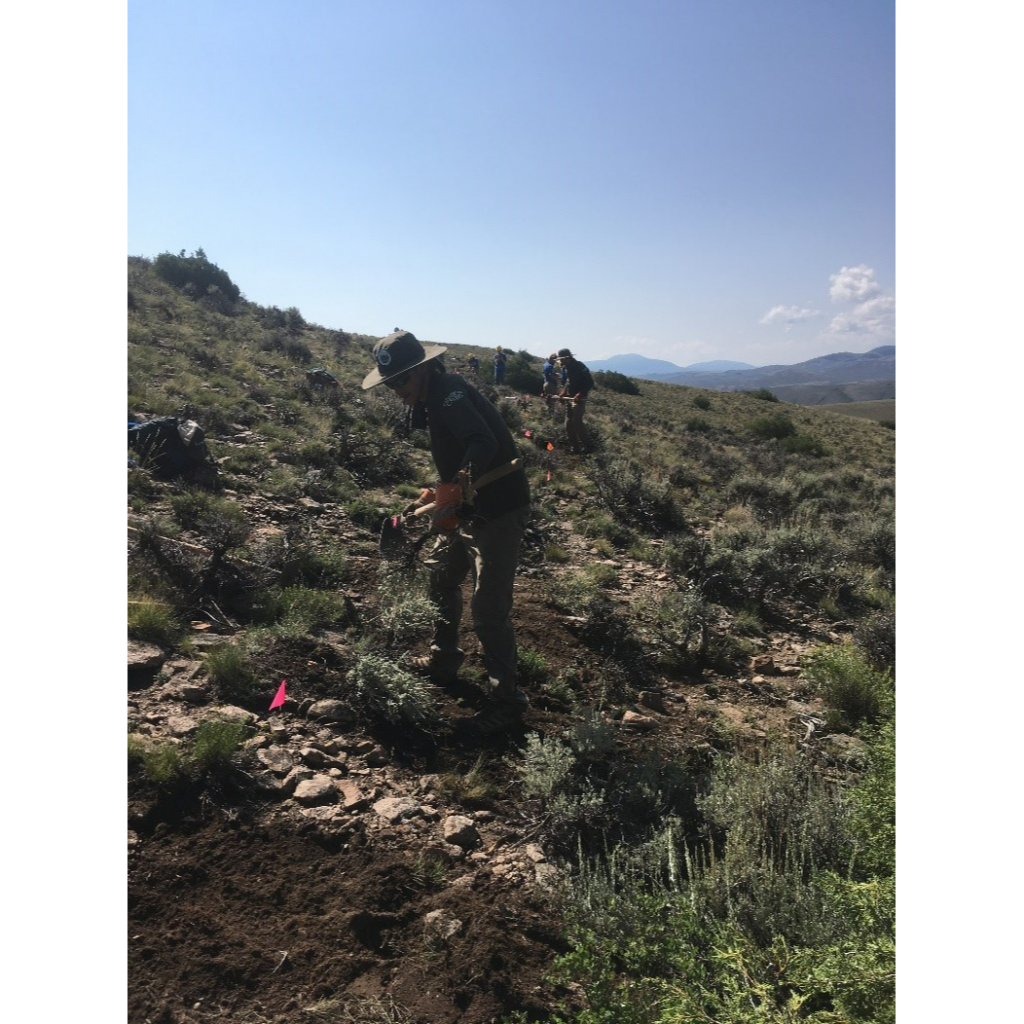
Matthew Merritt, originally hailing from upstate New York, is a second year Master’s of Environmental Management (MEM) student. He remembers hearing about Western from a professor at Paul Smith’s College in upstate New York. Paul Smith’s boasts a rural, 14,000-acre campus serving 1,000 undergraduate students where Merritt studied Natural Resource Management in the Adirondacks, graduating in 2020.
On his professor’s recommendation, Merritt spoke with Dr. John Hausdoerffer, the founder of the Clark Family School of ENVS, about the MEM program. Dr. Hausdoerffer gave him the hard sell, latching on to Merritt’s love for snowboarding and talking up Gunnison’s proximity to nearby slopes. The rest is history.
Merritt did not have a specific project in mind when he entered the MEM program, but knew he was interested in land stewardship. He quickly found kinship with Joe Lavorini, a 2020 MEM graduate who is heavily connected in the local land conservation world. “Everything Joe was talking about, I was like, ‘oh man, sign me up already!’” remembers Merritt.
Lavorini led Merritt to a project that combined the Sustainable and Outdoor Recreation (STOR) Corps crew member position with a Conservation Connect Fellowship with the National Forest Foundation (NFF), the congressionally-chartered nonprofit partner of the U.S. Forest Service (USFS) that works on stewardship, education, and outreach projects on USFS lands.
The NFF also provides funding to STOR Corps. Lavorini, who acts as Merritt’s community sponsor, works with the NFF as the Gunnison County Stewardship Coordinator and oversees both aspects of Merritt’s project. Starting in May 2021, Merritt began his work with the STOR Corps, which consists of two primary elements: on-the-ground conservation efforts and broader education and outreach efforts designed to cultivate a local conservation ethic. His assigned crew included two other corps members and a crew leader.
Their efforts took them across the Gunnison Valley, working with federal agencies, state agencies, and local nonprofit groups like High Country Conservation Advocates (HCCA), Gunnison Trails, and Crested Butte Mountain Bike Association (CBMBA). Their projects ranged widely, from back-breaking rockwork on local trails to down-and-dirty restoration work and tree planting projects.
Restoring historic hydrology
Throughout the summer, STOR Corps found themselves working to restore the natural hydrology, or water systems, of the valley. One such project found the Corps installing beaver dam analogs, or BDAS. BDAs are structures created by pounding posts into the ground and delicately weaving vegetation throughout the woody structure, later piling up dirt and mud to fortify the newly created hydrological barrier.
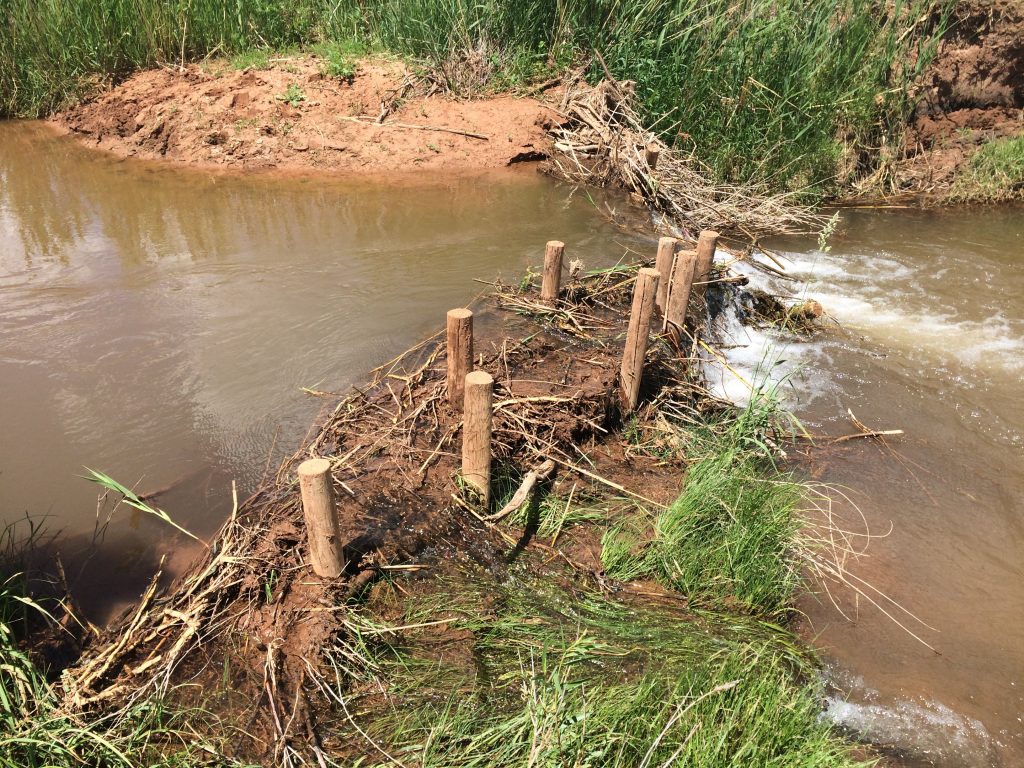
BDAS alter the flow of water on landscapes and simulate beaver activity, which is natural to the area and fundamentally impacts the surrounding ecosystem. Beaver dams or BDAs work by slowing, pooling, and spreading out the flow of drainages. BDAs are becoming increasingly popular valleywide, and combined agency and nonprofit efforts are underway to install hundreds of the structures in landscapes that are sorely missing historic beaver populations.
“Personally, those were my favorite days, building the BDAs; they were awesome,” says Merritt. BDAs are tremendously effective at transforming landscapes and hydrological systems, but they begin to break down after several years due to seasonal changes and storms. Still, they are relatively cheap and easy to install with the usage of volunteer labor, and their ecological merits are considerable.
For Merrritt, constructing the BDAS with STOR Corps up in Taylor Canyon was his favorite field project. “It’s just instant gratification. You start off with this tiny little trickle of a stream, and you get to construct things, you get to pound posts in the ground, you get to weave branches and basically become a beaver. And by the time you’re done, you’ve got water over your waist…and you’re seeing all the water going to the ‘ancient beaver channels,’ as they were calling them,” says Merritt with a laugh.

Working to install the BDAs in partnership with HCCA, fellow MEM student Eli Smith (who manages HCCA’s land stewardship and volunteer efforts), and volunteers from around the Gunnison Valley made the work all the more rewarding. “It was just a party every day. You get there and everyone is so positive and so happy to be doing what they’re doing,” says Merritt.
Another method of restoring hydrological systems utilized by Merritt and his crew is the “one rock dam,” or ORD. This system fits rocks of various sizes tightly into the landscape, forcing water to slow down. Originally conceptualized and used by ancestral Pueblans to shape the landscape centuries ago, the structures were recently re-popularized by Bill Zeedyk.
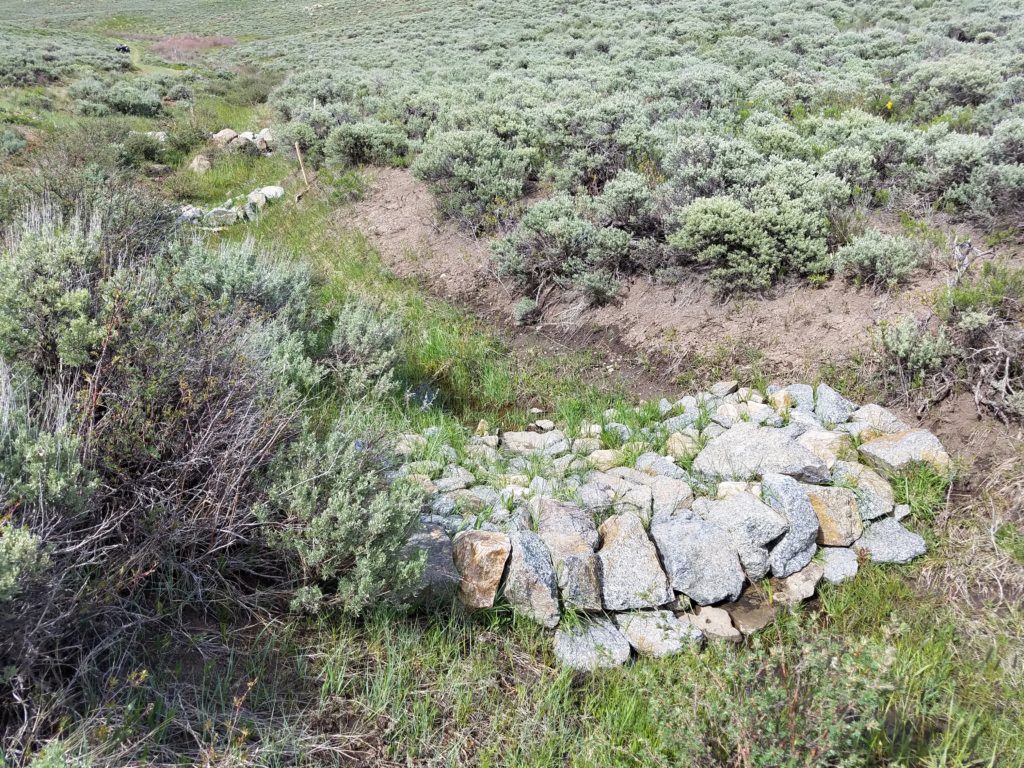
Zeedyk is a Forest Service employee of more than 30 years who founded his own ecological consultancy in 2004. He became known as the “stream whisperer” in the Gunnison Valley for his efforts in understanding hydrological systems and their role in the greater ecosystem, and for passing that knowledge on to land managers and citizens.
ORDs are somewhat deceptively named. Despite what their name may suggest, these simple structures are not composed of a singular rock, but rather many rocks carefully puzzled together to act as a barrier to free water flow. When placed correctly, leaving little room for water to flow, ORDs reduce the impacts of landscape erosion and promote water infiltration into the soil.
In conjunction with BDAs and other land management strategies, ORDs are a key tool of land managers in the Gunnison basin in the fight to preserve threatened Gunnison Sage-grouse (GUSG), whose young rely on wet meadows (specialized ecosystems that are rich in nutrient-dense insects) to survive.
When landscapes experience fast-moving water and significant, channelized erosion, these wet meadows don’t receive the sustaining water infiltration they need to thrive. And when the wet meadows go, GUSG and other species dependent on these specialized ecosystems are not far behind.
To that end, conservation groups including HCCA, the Fort Collins-based Wildlands Restoration Volunteers (WRV), and others are working in conjunction with the US. Forest Service and Bureau of Land Management (BLM) to install hundreds of these low-cost, low-risk structures. ORDs can range from a couple square feet to specialized structures as wide as 20 feet. Merritt remarks on how amazing it is that structures composed of natural materials found on-site can have such a drastic positive impact on the land.
Winning hearts and minds
Weekdays in the summer were predominantly occupied by trail building and maintenance, tree planting, and mastering the intricate natural science of BDA and ORD creation, amongst other restoration work. On the weekends, STOR Corps would fulfill the education and outreach portion of their positions, often posting themselves at trailheads and campsites to interface with the public.
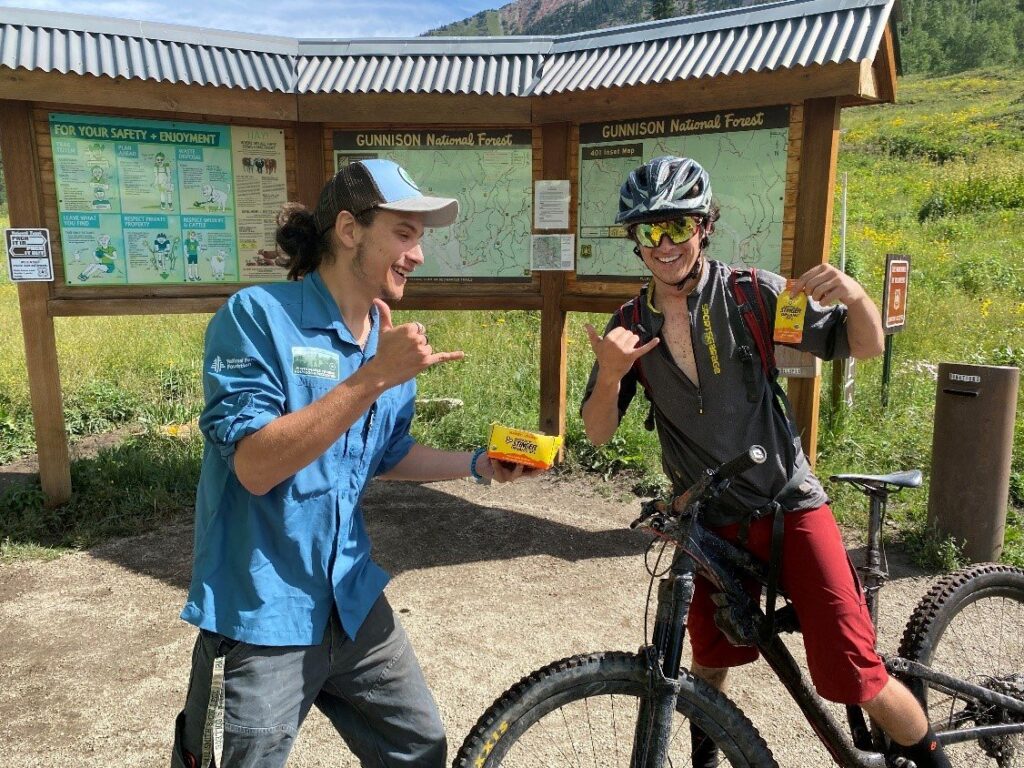
They frequented popular locations like Judd Falls and Snodgrass. Wearing their official uniforms, Merritt and his fellow Corps members would educate passers-by on Leave No Trace (LNT) principles and dispense educational materials, including maps, coloring books, and stickers. They also handed out the infamous waste alleviation and gelling bags, known colloquially as “WAG bags.”
For the uninitiated, WAG bags are waste treatment bags that utilize chemicals designed to render human waste harmless and disposable in regular trash systems. Featuring a chemical gelling agent originally designed by NASA for use in space, WAG bag usage down here on Earth is highly recommended in heavily trafficked natural areas where the accumulation of human waste can have severe impacts, such as ecologically sensitive areas. With the recent uptick in camping around Crested Butte, encouraging WAG bag usage has become a point of emphasis for land managers.
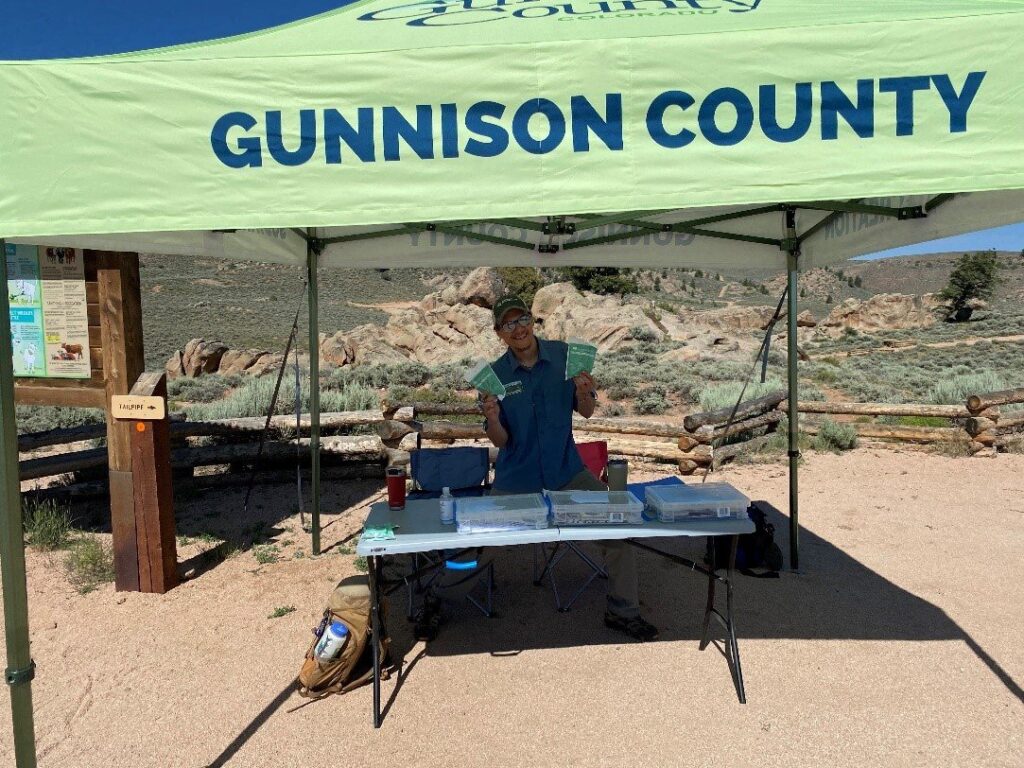
Another focus of the STOR Corps was studying and responding to Crested Butte’s recent switch from dispersed to designated camping areas across six different local drainages, a management decision made as the result of increased usage and impacts. The switchover was much-discussed, and the STOR Corps was one of several interested parties monitoring campsites.
Merritt prepared an optional survey to understand visitor’s camping habits, recreation activities, and waste and trash disposal efforts. Merritt says nearly all of his public interactions were positive, with the public seeming receptive to LNT, WAG bags, and the general message of land stewardship.
When interacting with the public, Merritt attempted to forge common ground, prioritizing the element of human connection. “I’m not here to bust you, I’m not here to yell at you or tell you [that] you can’t do something,” says Merriit of his conversational tactics. He admits it can sometimes be hard to maintain neutrality when speaking with members of the public who may not share his conservation ethic. “You just hear something, and you want to be like ‘wait a second, that’s not entirely right,” he admits.
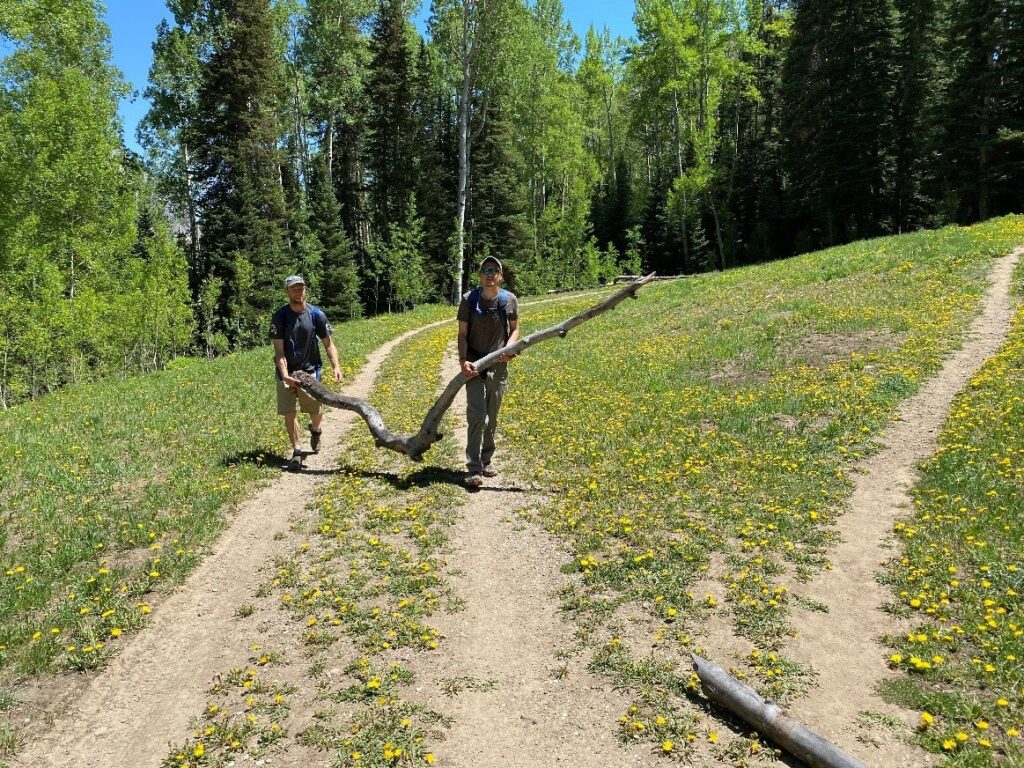
Facilitating the future
Early on, the other half of Merritt’s Conservation Connect Fellowship with the NFF largely revolved around obtaining facilitation and outreach skills. Over the summer, that included a weeklong trip to Washington state for an NFF-sponsored training. Other NFF trainings have centered on the National Environmental Policy Act (NEPA), stakeholder relations, and building organizational partnerships.
Merritt did not have to wait long to put his newfound facilitation skills to use. Over the summer and into the fall, a number of stakeholder and public comment sessions were held for the planned revisions to the Grand Mesa, Uncompahgre and Gunnison (GMUG) National Forest Plan, and Merritt assisted with the smooth operation of public meetings. The NFF’s role is to facilitate discussion on policy matters but formally stay out of the fray, encouraging civil public debate and hearing community voices.
Forging ahead
Looking ahead to graduation just four months from now, Merritt is excited to pursue similar work. “Living [land stewardship] every day, you see the importance of it…you are trying to connect people to these natural places, which is ultimately a great thing when you are trying to address these bigger issues like climate change, and just trying to address the uncertainty of our future,” says Merritt.
He stresses the critical importance of STOR Corps’ efforts to engage the community individually on important environmental topics like Leave No Trace. “I’ve done invasive species work back in New York…through that program we stopped the spread of invasive species just by talking to people, teaching them about ‘clean, drain, dry,” notes Merritt.
For now, Merritt is greatly enjoying his time in the field, and expresses interest in one day planning and managing the kinds of projects he implemented on the ground this past summer. “I want to hire people like yourself and myself, and get them out working, swinging an arbor hoe for a season,” he says with a smile.
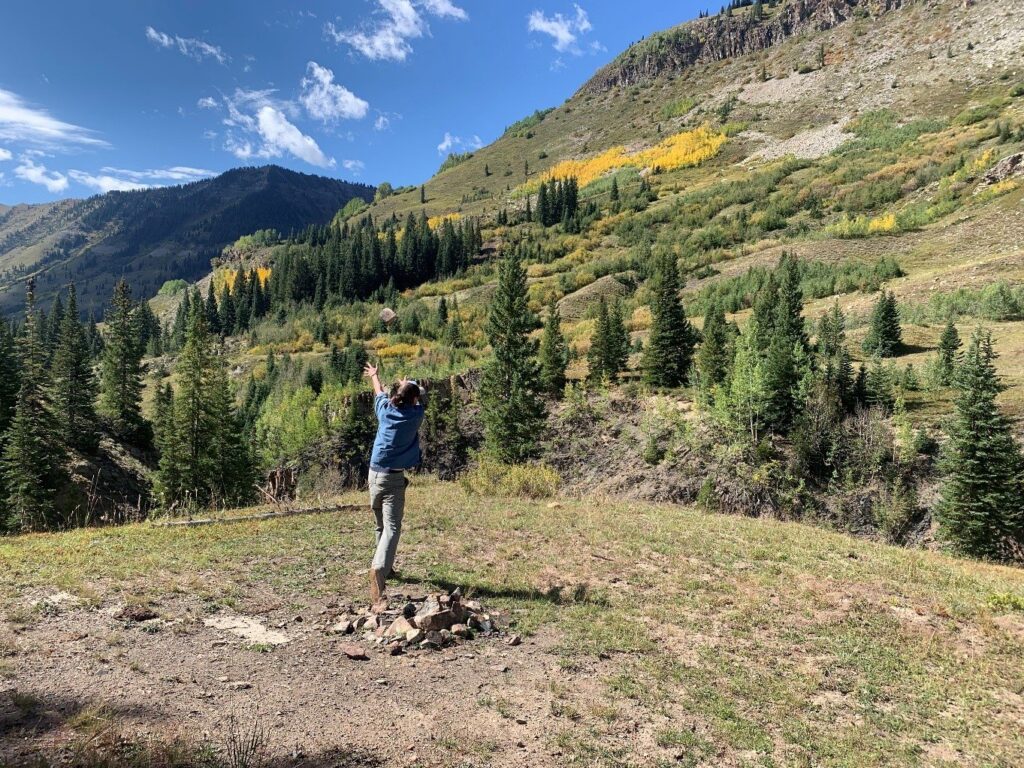

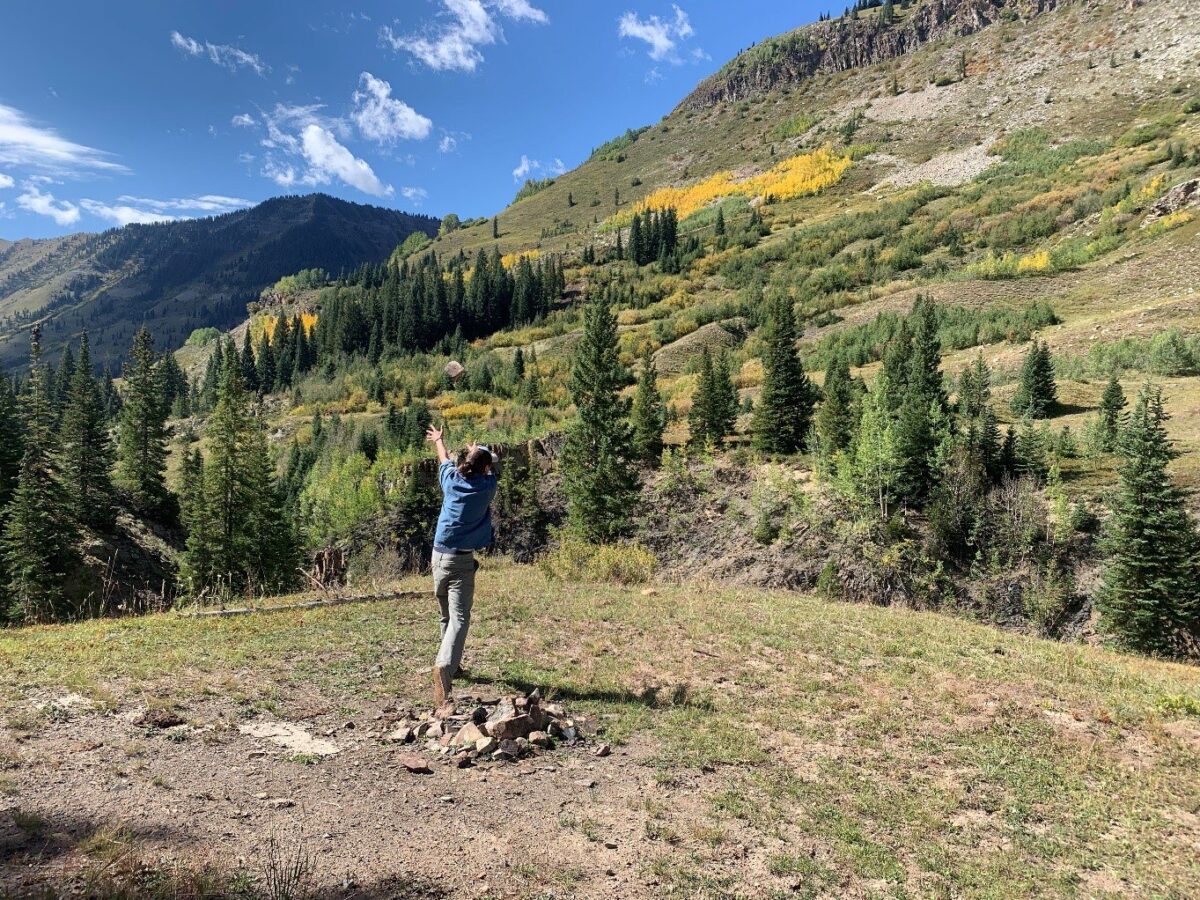
What a busy two years you have had Matthew Merritt. You’ve done a lot of amazing things for your community. I am sure you’ve learned an enormous amount about the unique environmental needs of your area. Now, go out and rock it!
Wonderful work by Matt and the STOR Corps team! And a great article summarizing this innovative work in the field of Environmental Management. The collaboration across many teams–starting with Western Colorado University, which embraced and sponsored these projects is highly commendable. This article should be shared with State and Federal Environmental Management authorities on how grassroots projects like these are making significant gains on promoting sustainability for public parks and educating the public about how they too can become part of these critical efforts to ensure these beautiful lands will be available for future generations to enjoy.